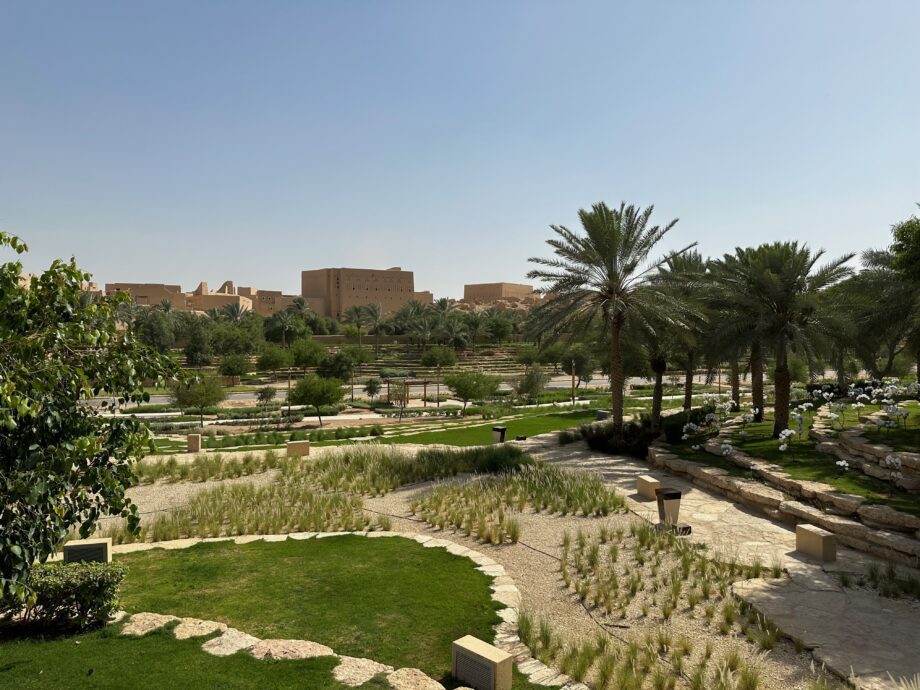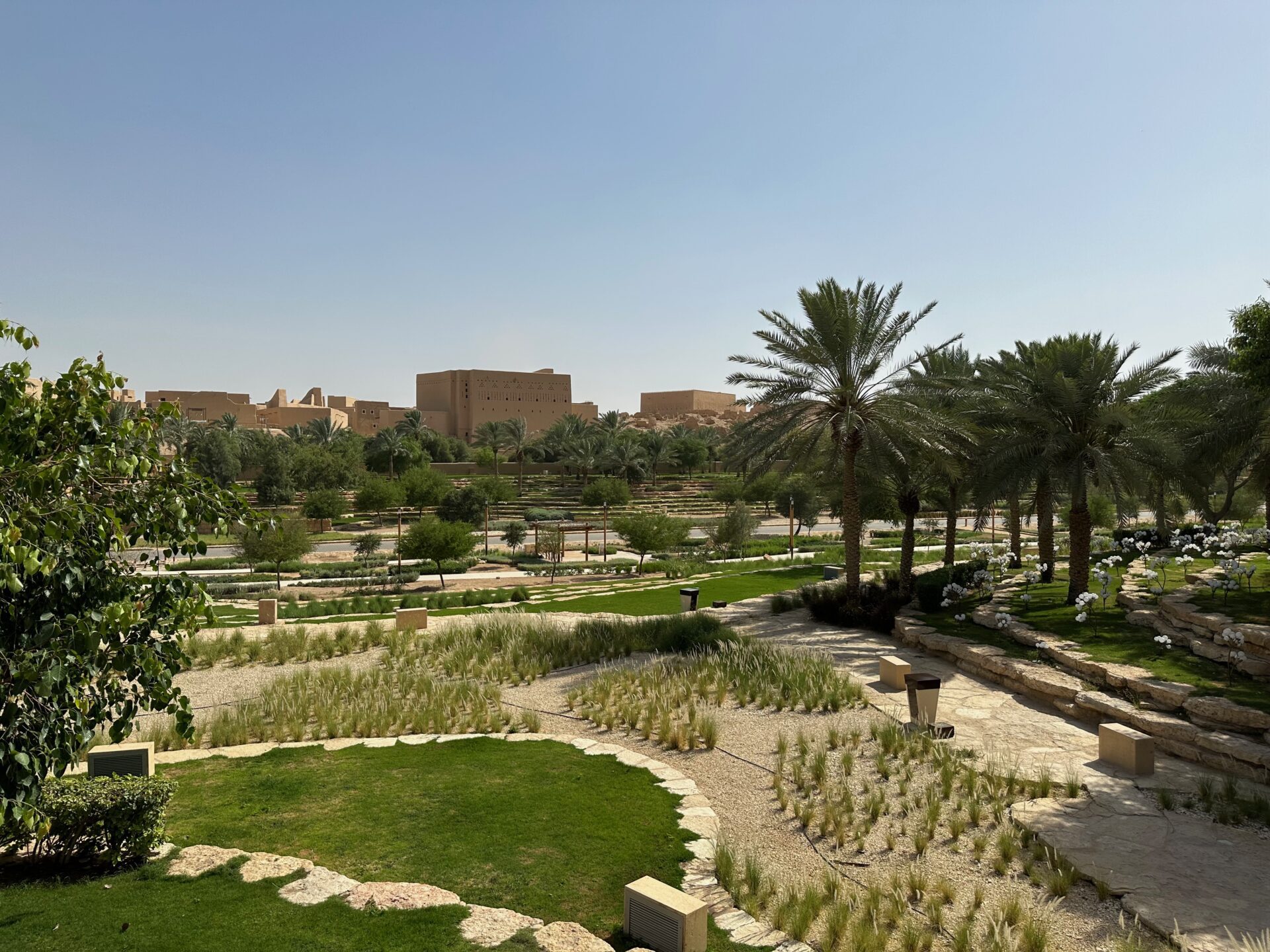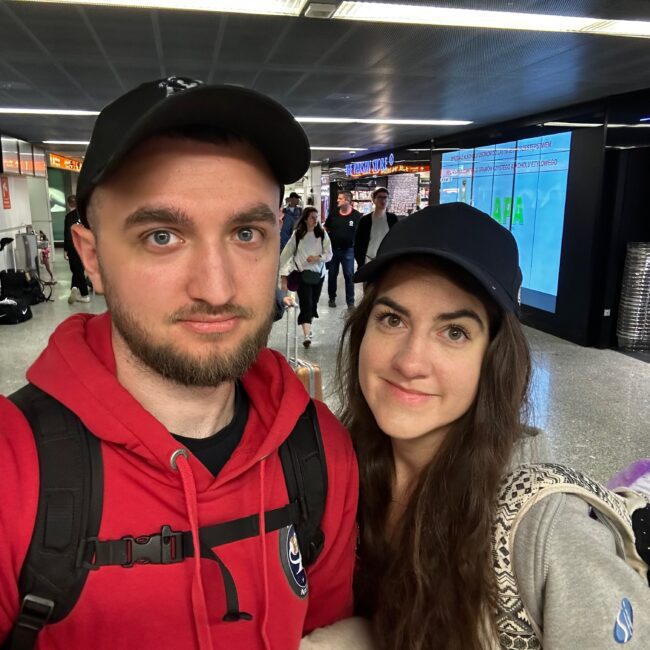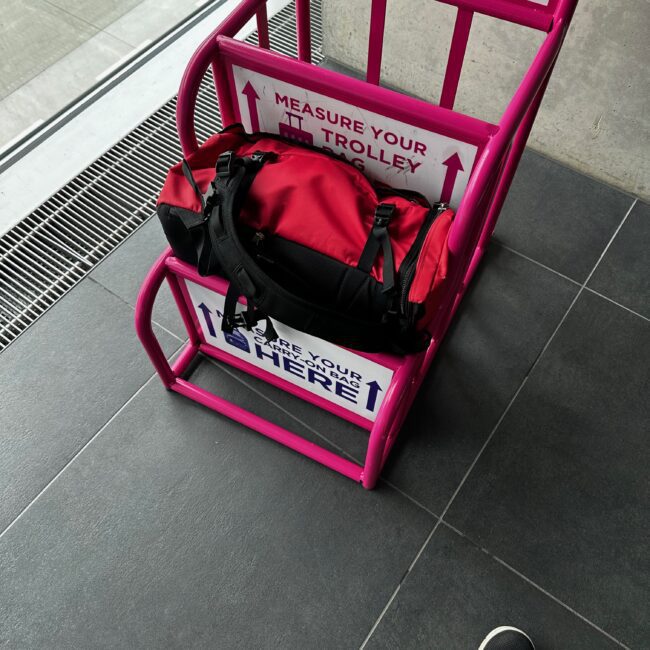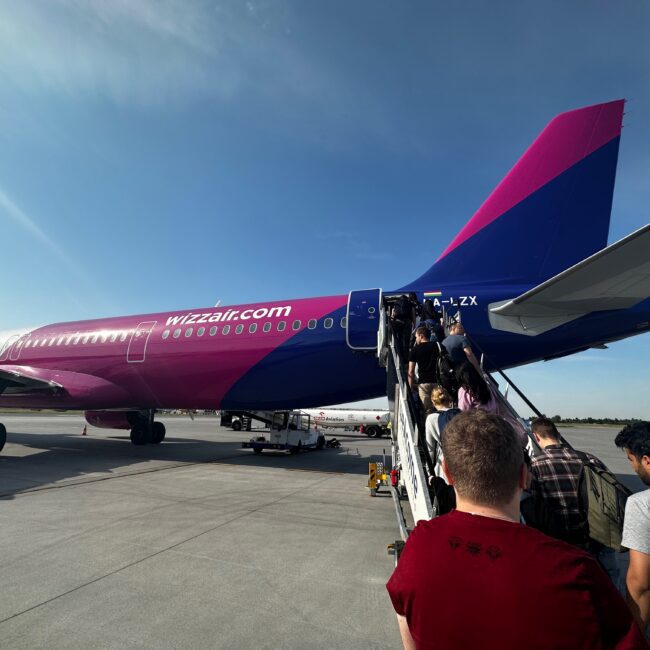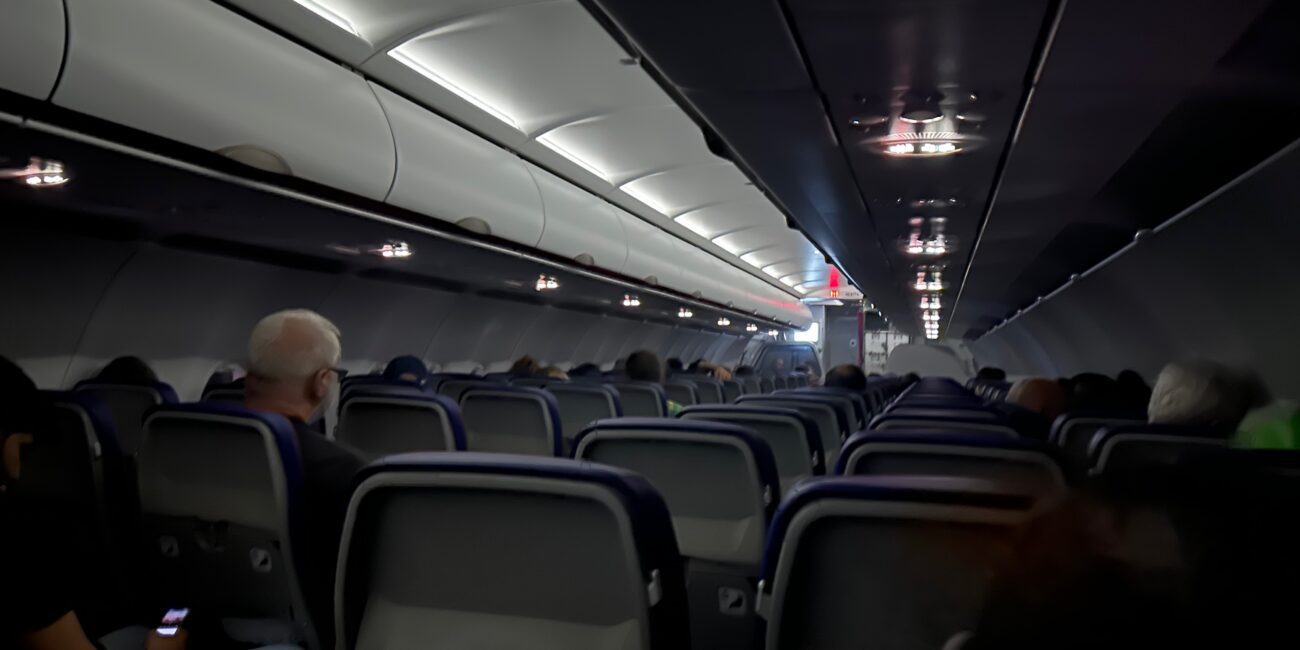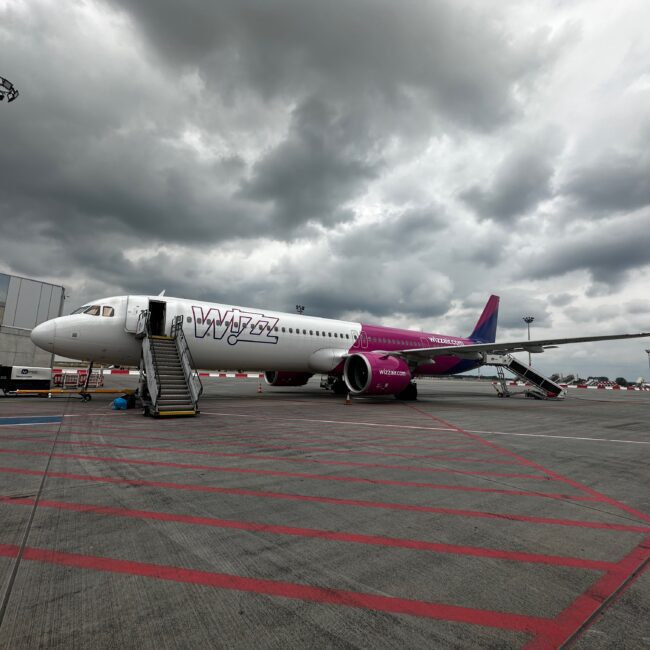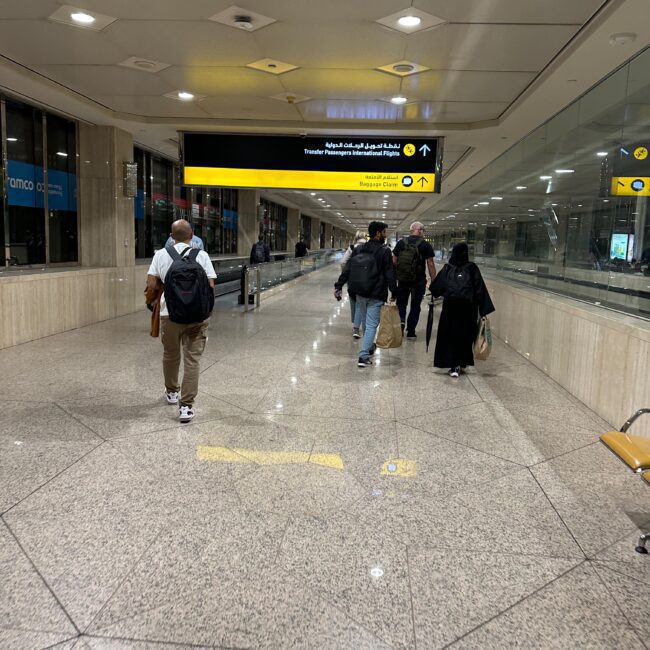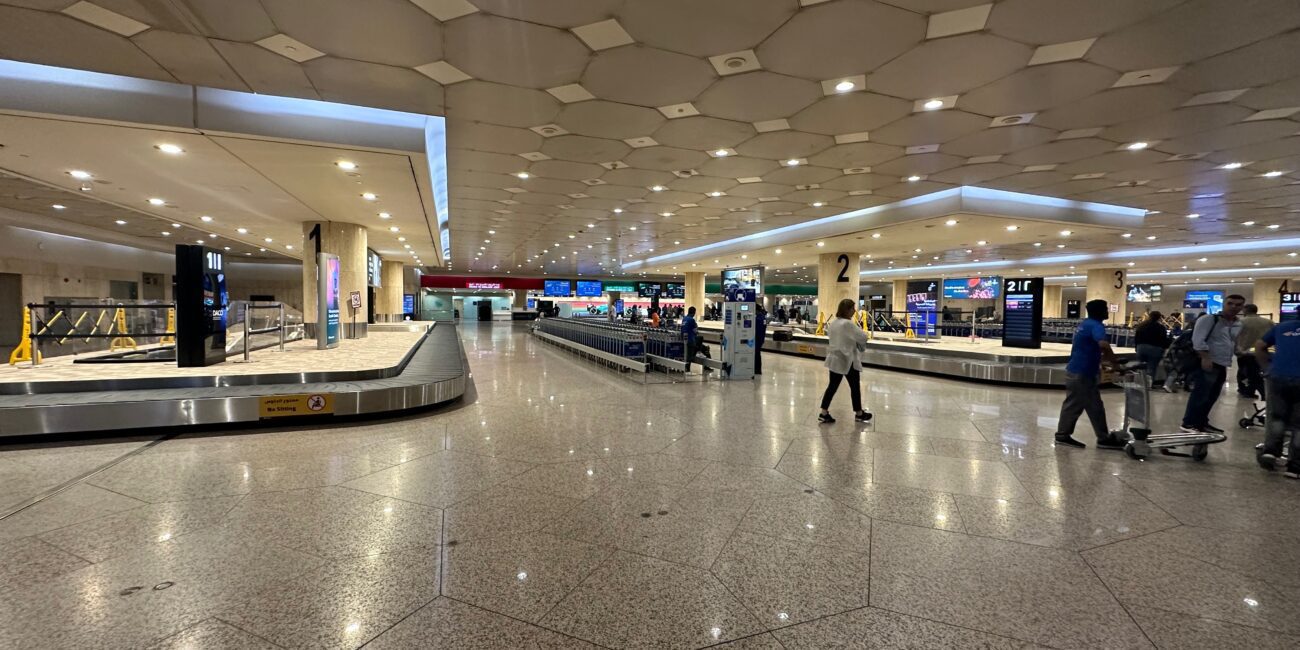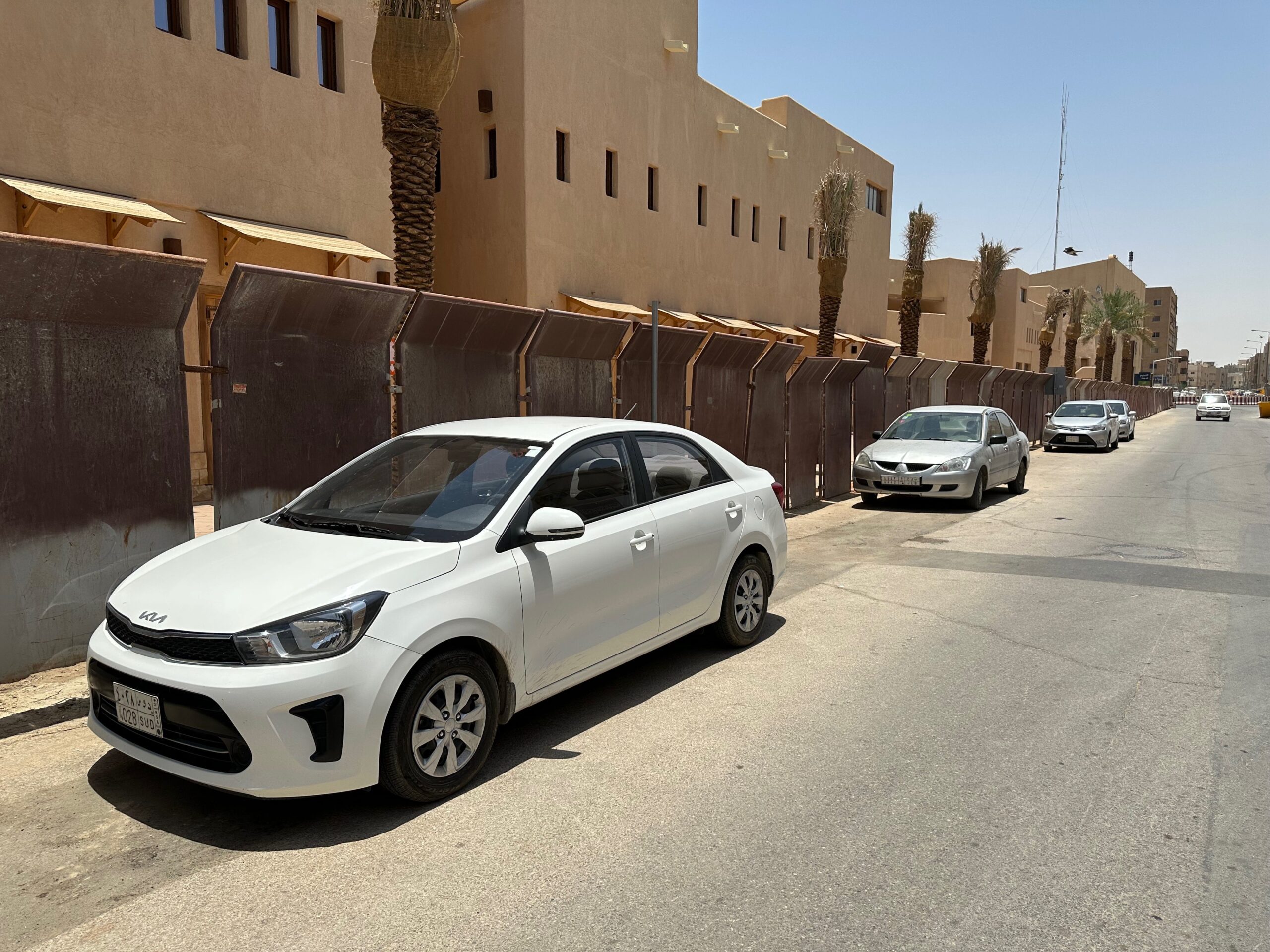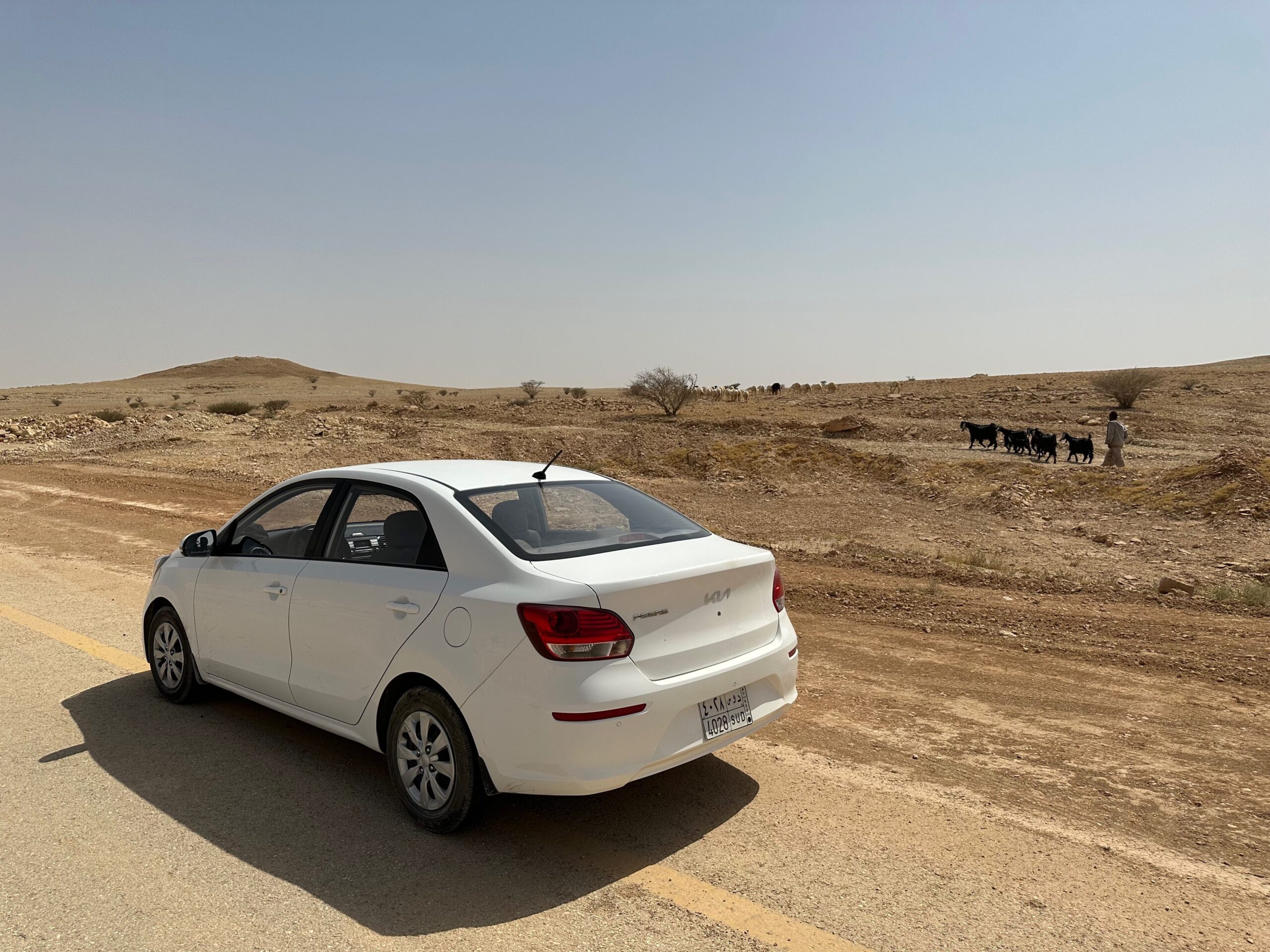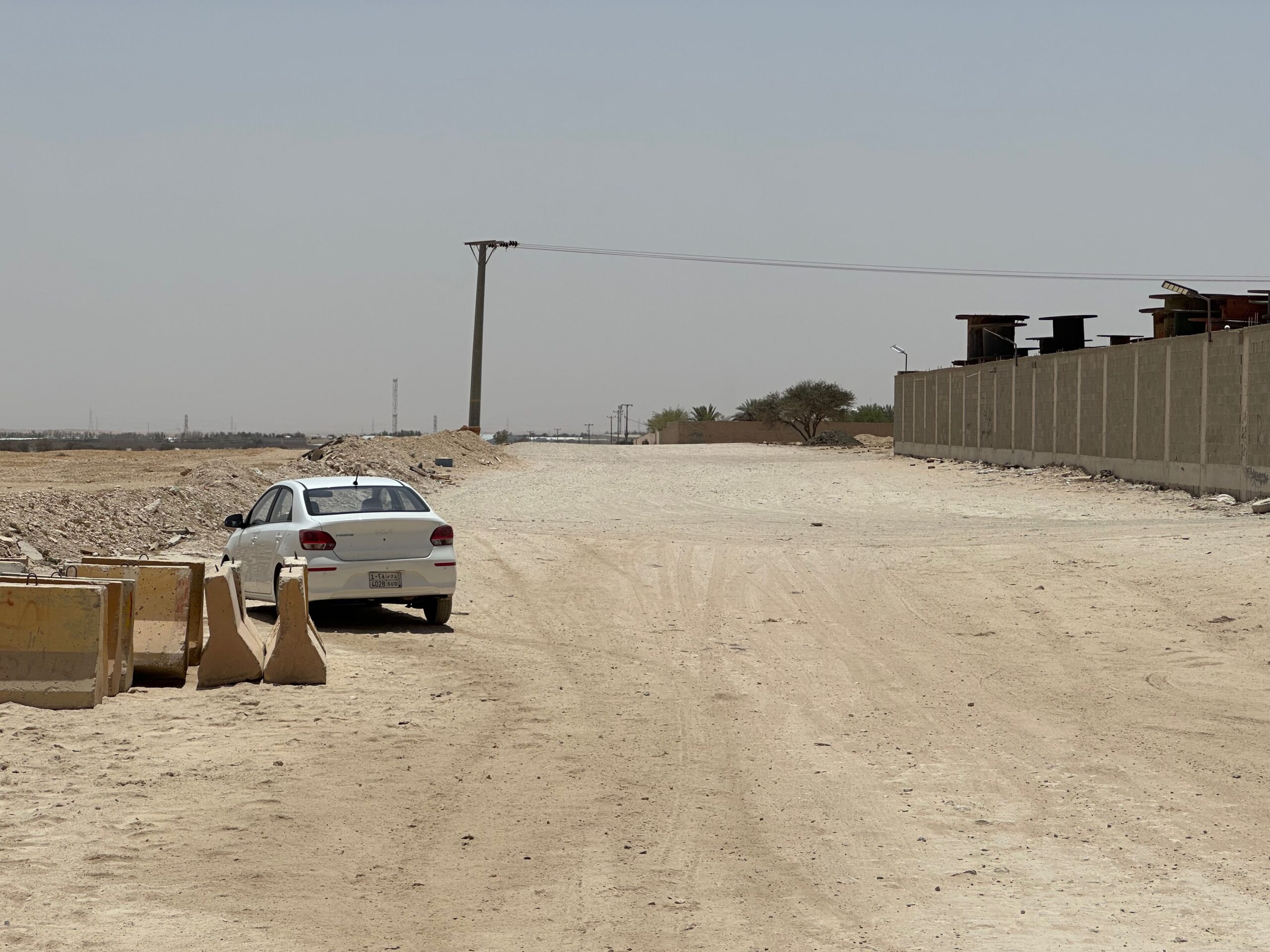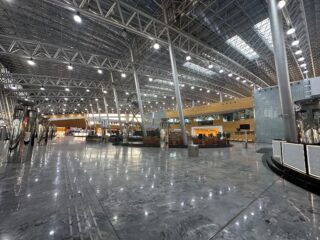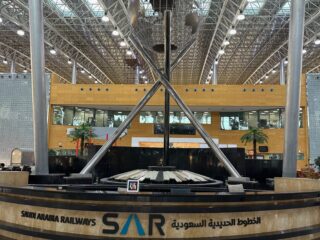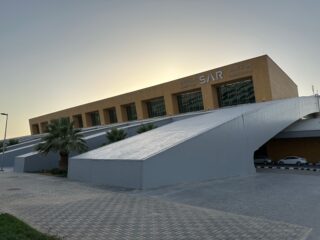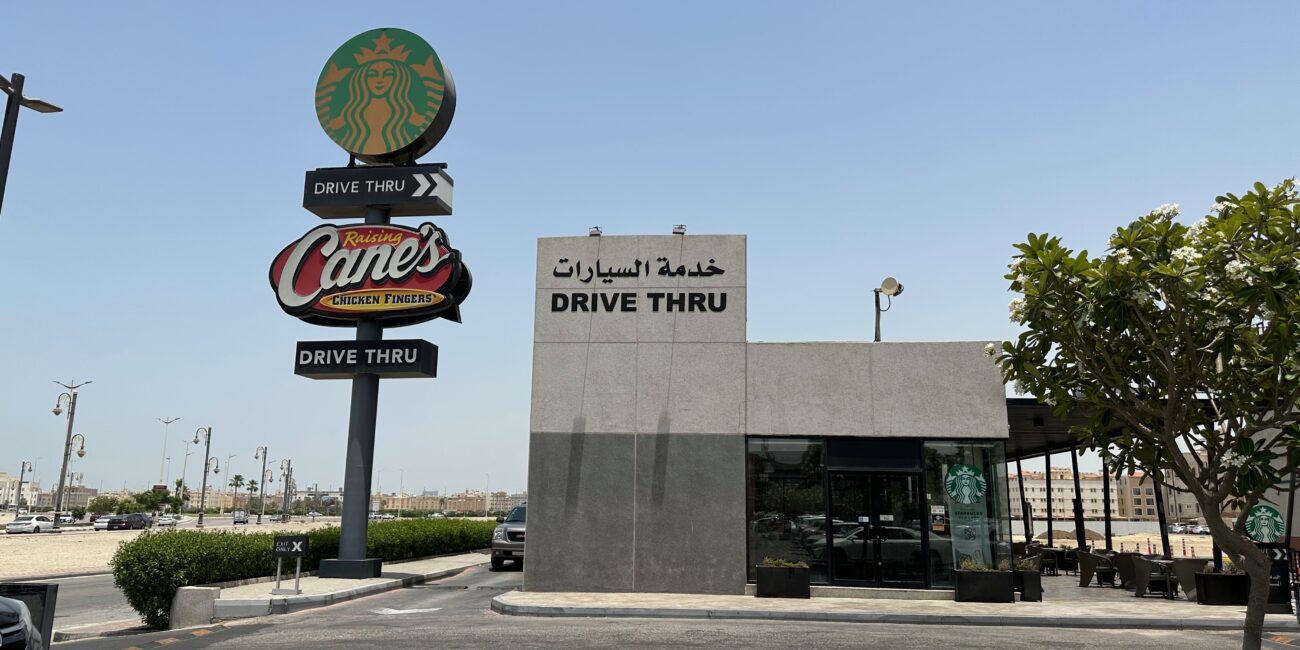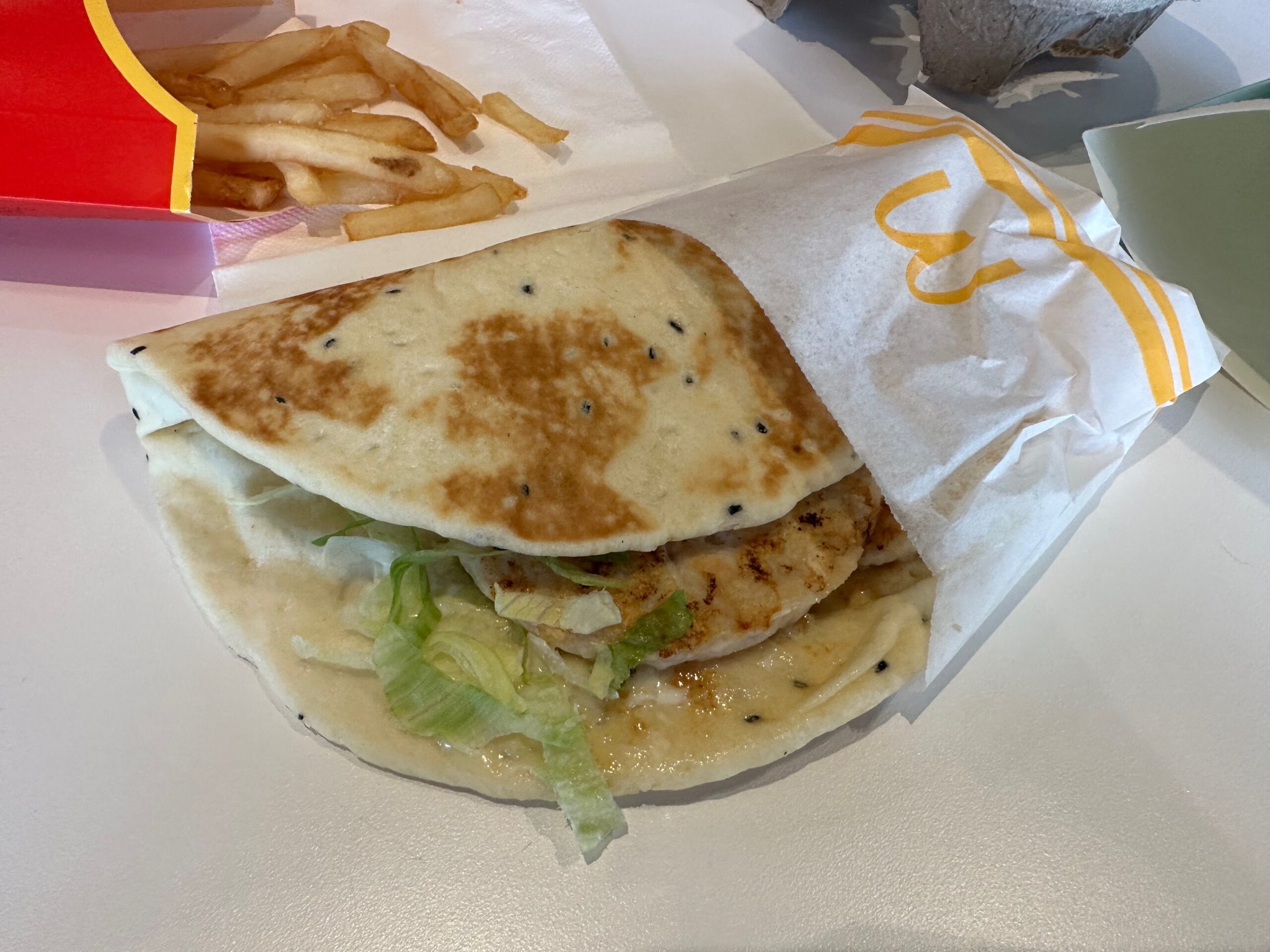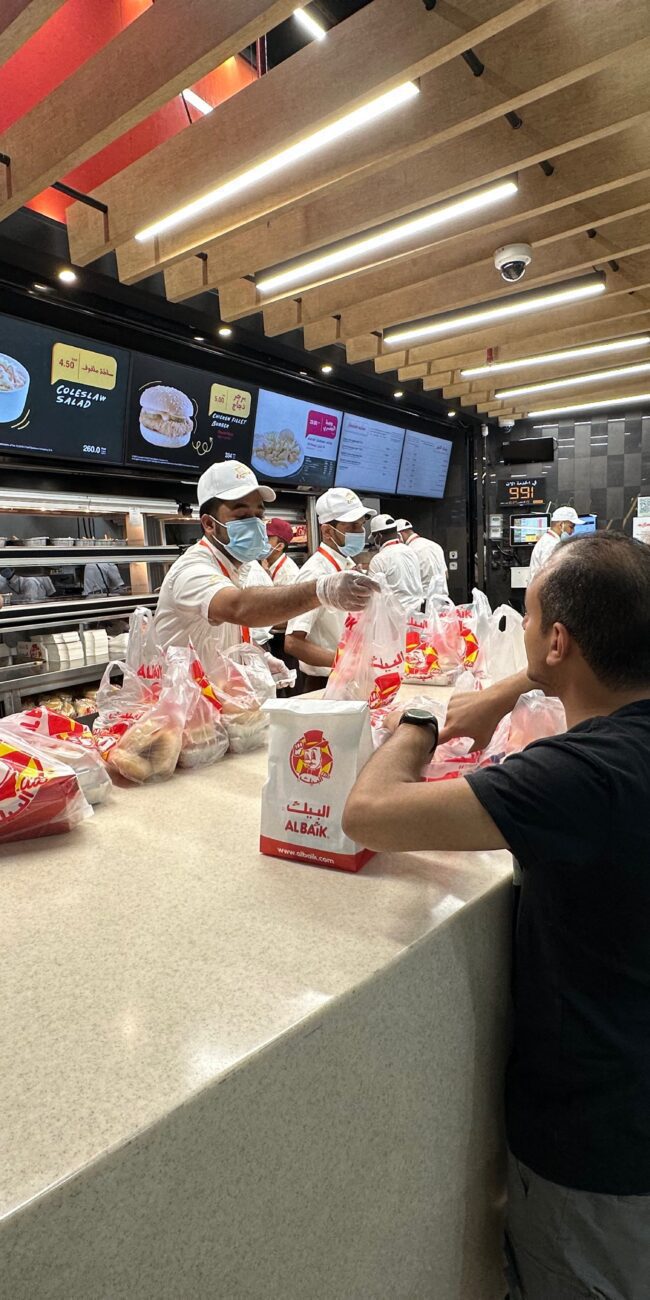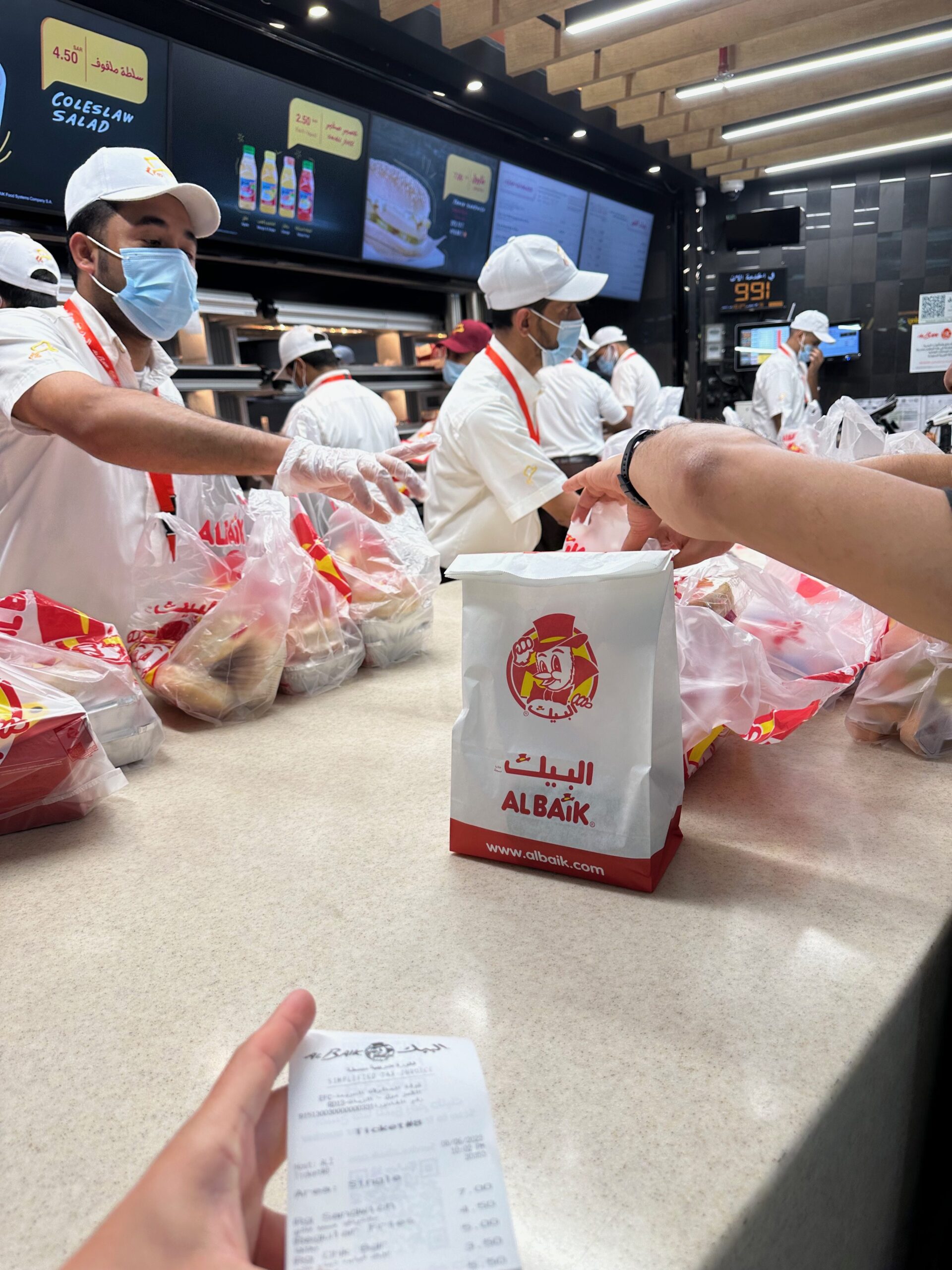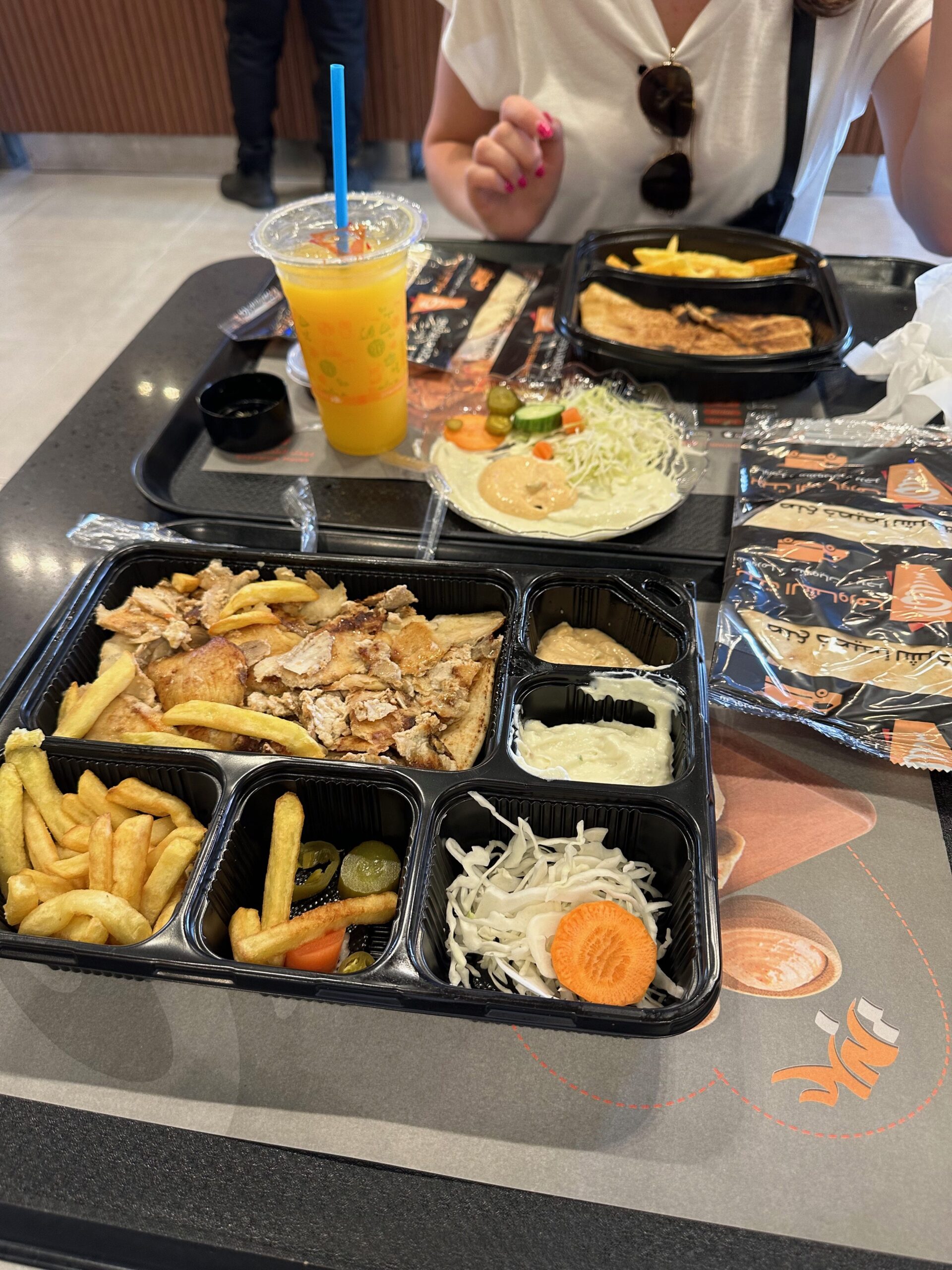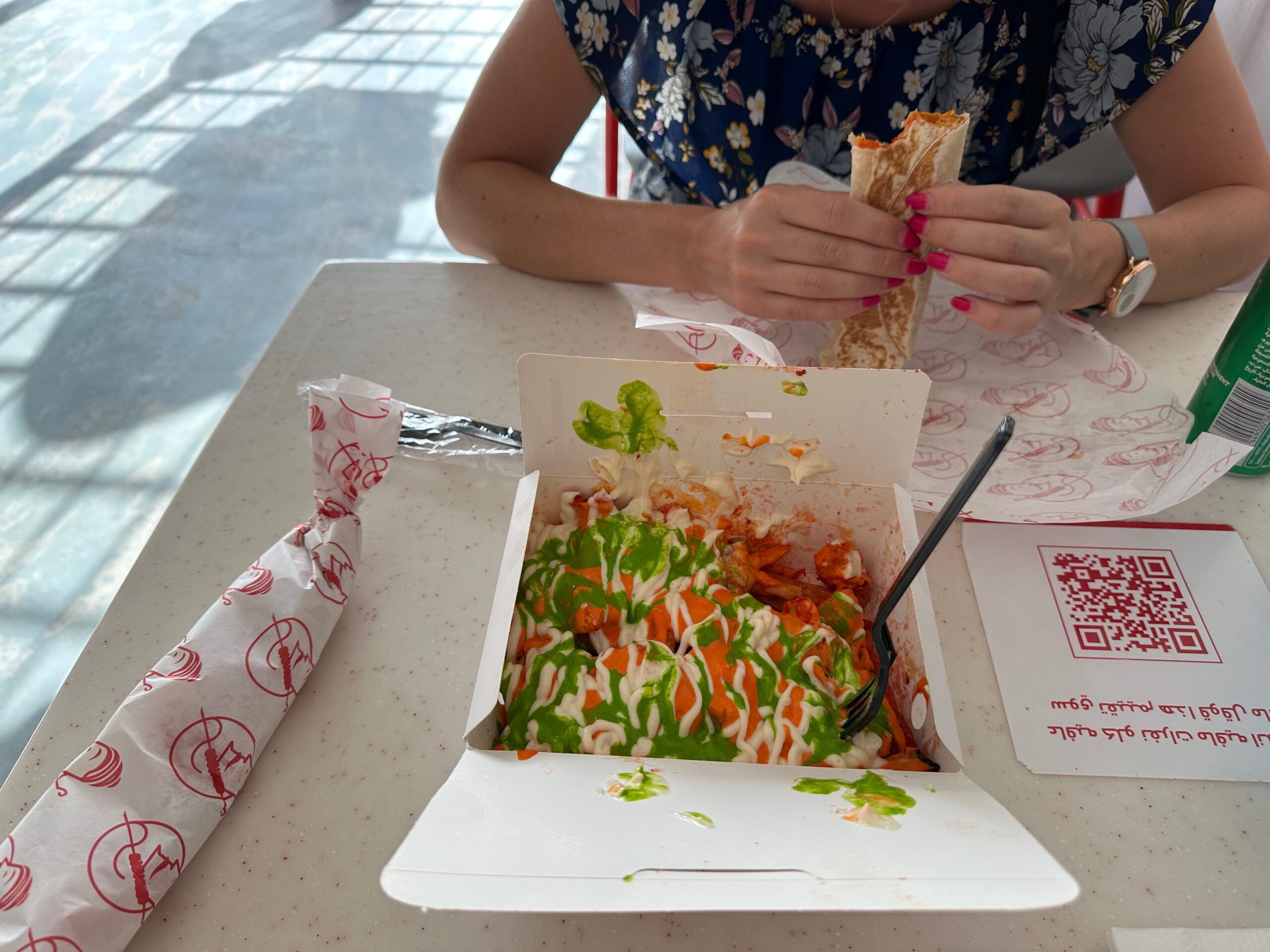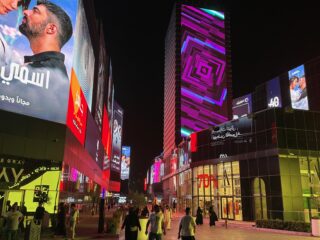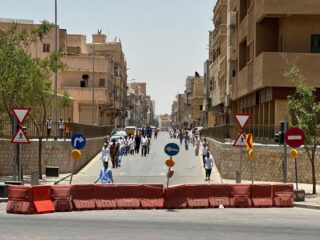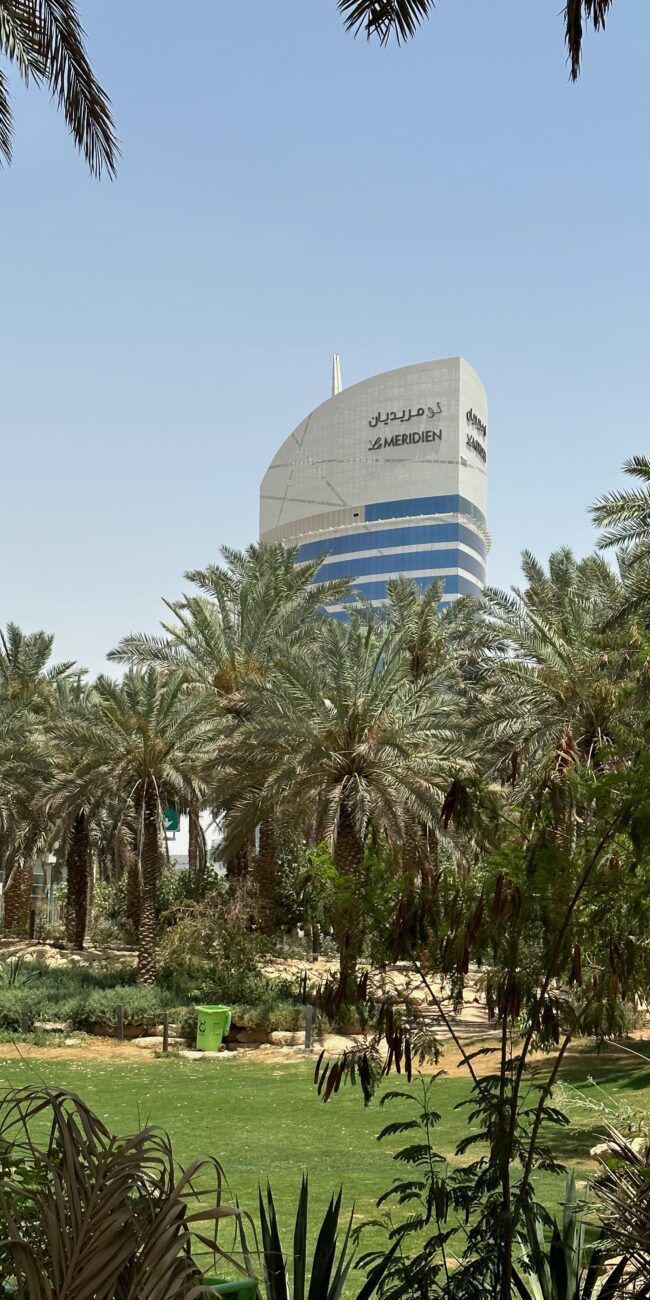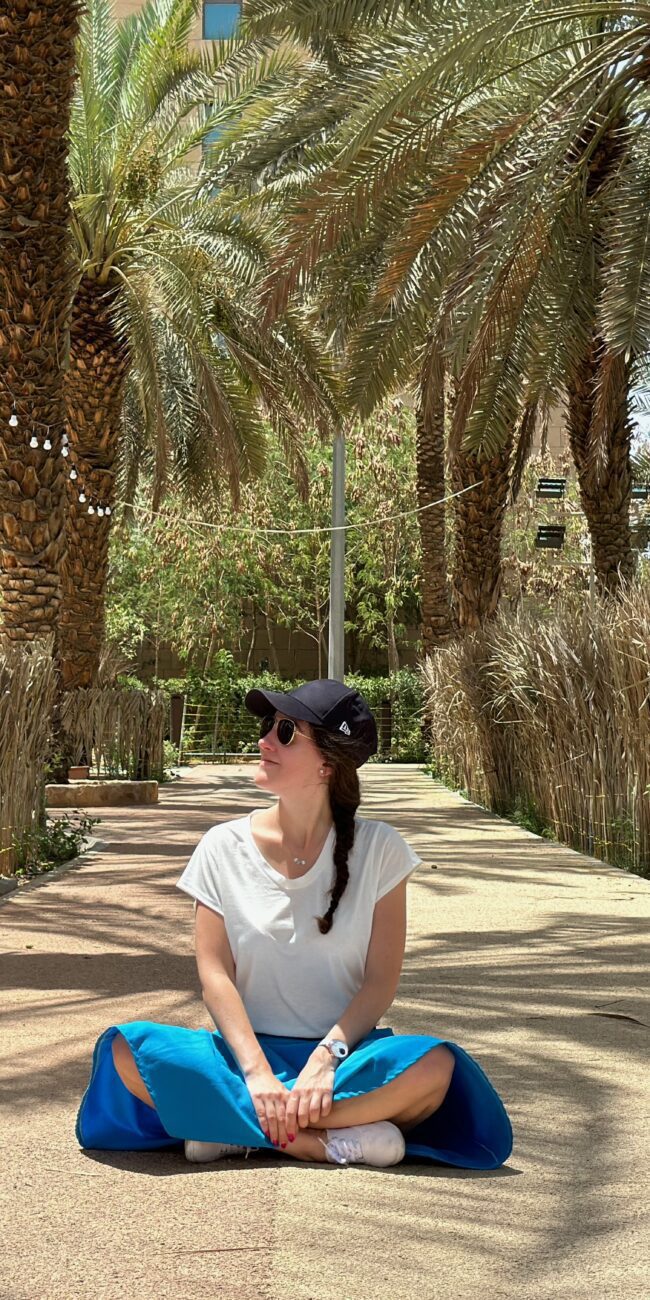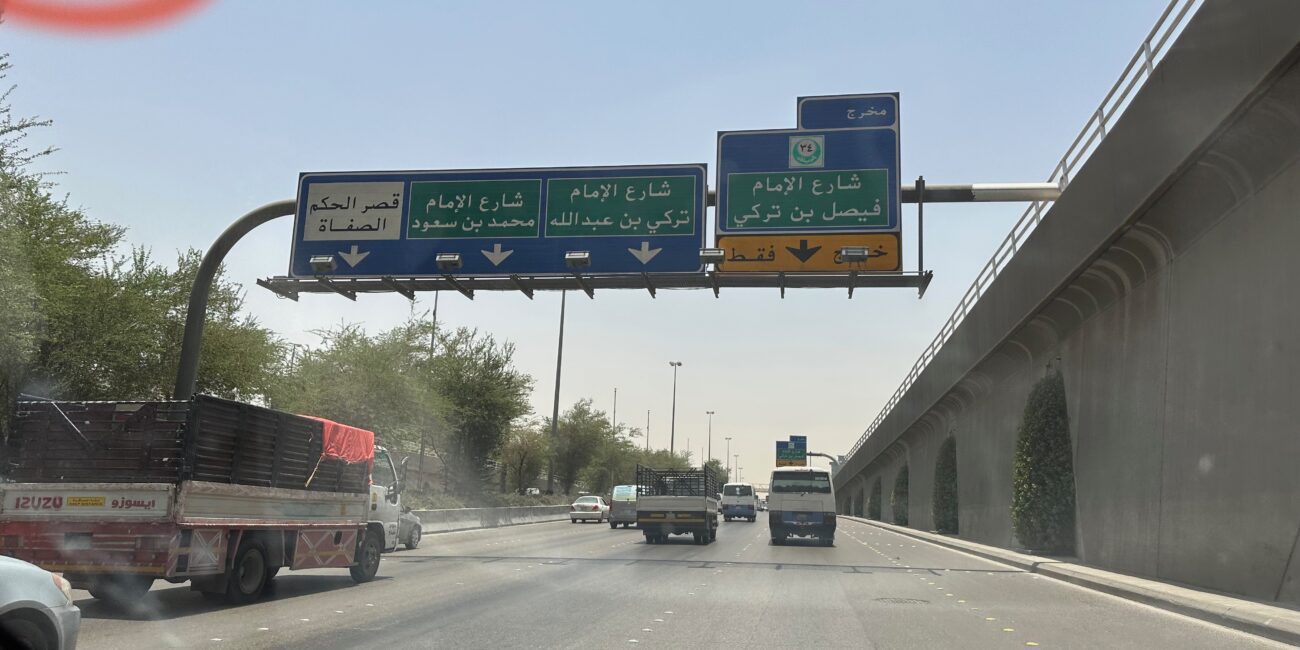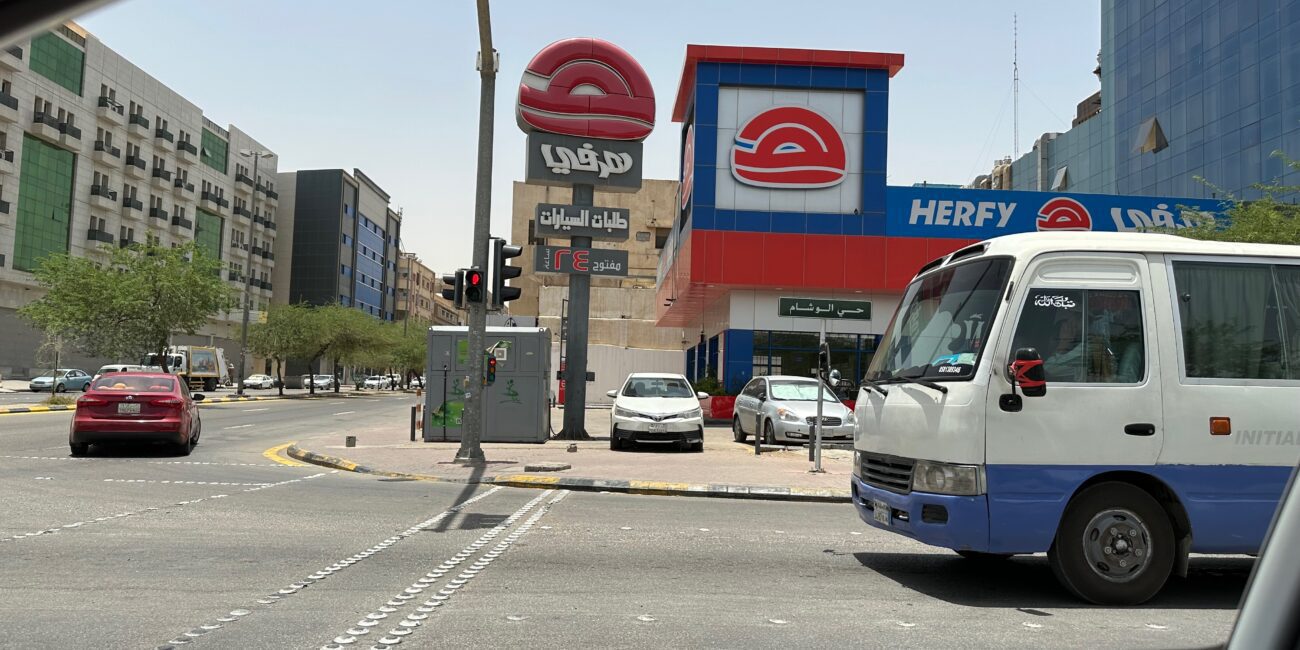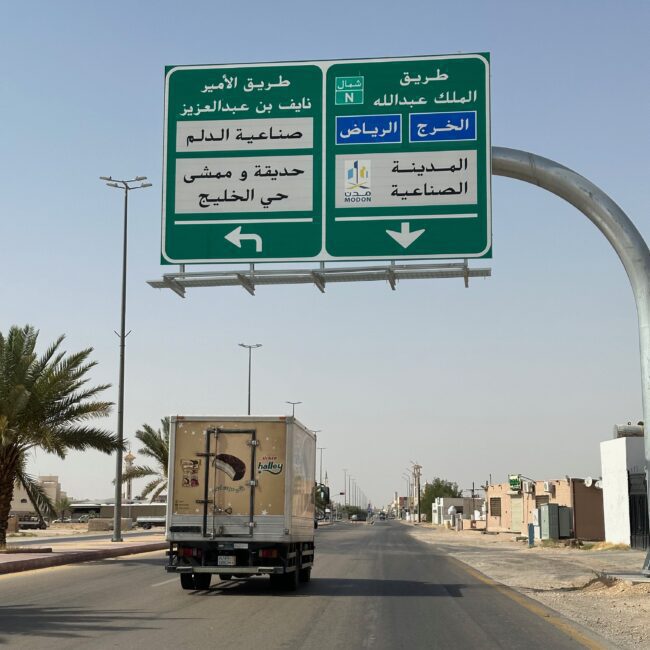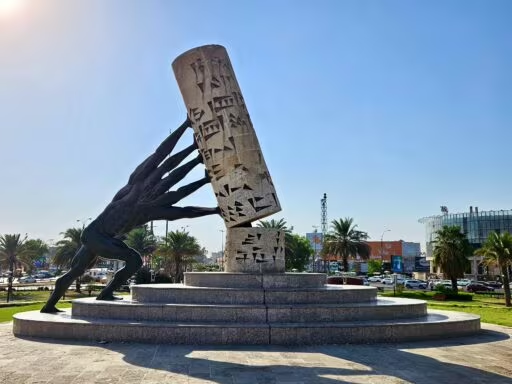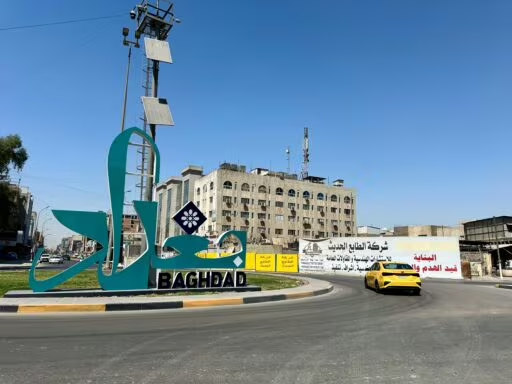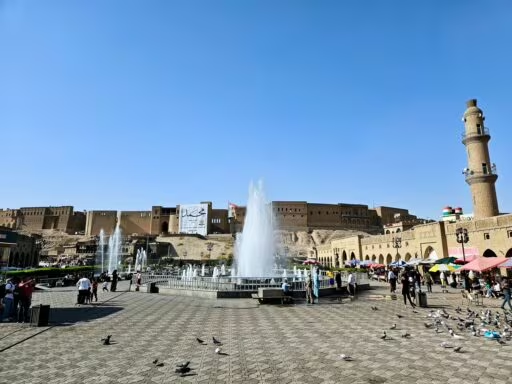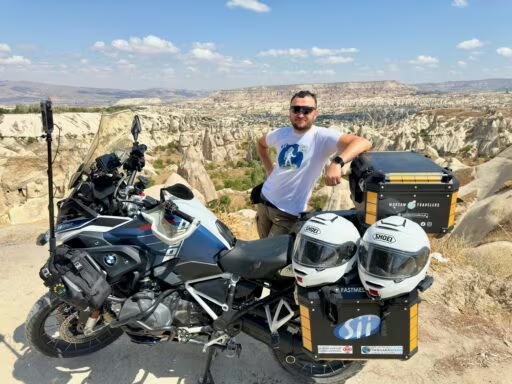This post is also available in:
Polski
Hello! 👋
A trip to Saudi Arabia was an amazing experience for us, full of contrasts, fascinating history and a different culture. This is a country that has relatively recently opened up to tourists. Our visit was a unique opportunity to see places that until recently were inaccessible to most travelers.
We’d like to offer some practical advice to help you plan a similar journey. We’ll walk you through how we prepared, the flights we took, and how we navigated the country. Along the way, we’ll also share recommendations on must-see spots and local cuisine. We won’t focus on paperwork or regulations that could change, but instead, we’ll share personal experiences. This should give you a clearer picture of what to expect. You’ll also find links to detailed posts about places that left the biggest impression on us.
We haven’t had time to see everything – our journey through this fascinating country is just beginning. Saudi Arabia is so diverse that one visit is not enough to discover all its secrets. During your travels, you may come across many surprises, such as different attitudes toward women or conservative social principles. These contrasts enhance the beauty of the place and are worth exploring. They help in understanding how tradition and modernity blend in daily life.
How did we get to Saudi Arabia?
Our trip took place in June 2023, right in the middle, or even the peak, of the Saudi heat. We started our journey in Warsaw, from where we took an early morning Wizz Air flight to Budapest. In the afternoon, another flight awaited us, this time to Dammam. In 2023, WizzAir launched flights to three Saudi cities: Jeddah, Riyadh and Dammam. We chose the budget connection to Dammam because we wanted to see the Persian Gulf.
Low-cost
This was my first Wizz Air flight, so I had some concerns about the “convenience” of low-cost carriers. Jadzia, on the other hand, already had experience with low-cost airlines, so she knew exactly what to expect. She also knew all the tricks on how to pack so as not to run into extra fees. The first segment, the flight to Budapest, passed without any major adventures, although the plane was filled to the brim. On the Budapest-Dammam route, the situation was different – quite a few seats were free, so we easily changed to sit together, and without paying extra for the seats.
In terms of paperwork, passport check-in is done in Budapest, as each leg of the flight had a separate reservation. We had to leave the airport, go through passport control and check in again. Although online check-in was possible, we did not receive a boarding pass right away – it was issued free of charge at the airport counter.
As an aside, by the time of this writing, we had been to Saudi Arabia twice. The second time we went for New Year’s Eve, combining it with a car ride to Bahrain. As for comfort, a five-hour flight is the absolute maximum you can stand on those seats. For the untrained traveler: it’s low-cost, so don’t expect Qatar Airways or Turkish Airlines standards. Wizz Air simply takes you from point A to point B, and that’s it.
Fortunately, we were able to pack only in carry-on luggage, so we avoided additional fees for checked baggage. We only had backpacks, which made all the logistics much easier.
Visas and documents
As of this writing, Poland is on the list of countries whose citizens can easily obtain a visa to Saudi Arabia through the eVisa system. The application process is simple and intuitive, so it won’t take much time. One important note: the visa is valid from the moment it is issued. If you’re planning to travel next year, it’s better to wait before applying.
The cost of the visa is about SAR 500, which also includes mandatory health insurance. However, from what we’ve read on various travel forums, this insurance mainly covers basic costs, such as ambulance intervention (and that, too, might not be enough to cover possible emergency costs). That’s why it’s worth considering additional private insurance to have peace of mind in case of any health problems.
You can also get a visa at the airport at self-service kiosk-type machines, so the choice is yours. Passport control itself in Dammam is quite efficient, without long waits.
If you intend to return to Saudi Arabia within a year (because that’s how long the visa is valid), the cost is spread out over subsequent trips and is not as severe. On the other hand, if it is a one-time trip, the visa is one of the major expenses of the entire trip. We received the visa immediately upon confirmation of payment through the government system.
Avoid brokers in arranging documents
It is also worth mentioning that there are quite a few visa intermediary companies offering their services on the market. Our advice: avoid them. It’s not worth handing over data such as passport scans and other information to third parties, especially since the process of obtaining an eVisa is really simple and secure. The system is very transparent, and you can easily pay the visa fee by credit card directly on the official website. There is no point in overpaying at intermediaries.
You will arrange all the paperwork on the official website: eVisa Saudi Arabia.
Car rental
In almost every country outside of Europe that we visit, we rent a car or another mode of transport. In Vietnam or Thailand, we usually opt for a scooter for shorter distances. However, in Saudi Arabia, we stuck with our usual choice — a car. For nearly four years, I’ve been booking cars through Economy Car Rentals, and before that, I used Rental Cars in the United States.
This time, I rented a very basic car for getting around Arabia. It was literally the simplest model you can imagine 😄. If anyone asks what “minimal equipment” in a car looks like, that Kia would be the perfect example. It was fun in its own way, making for an unforgettable experience! 🚗
More detailed advice on renting a car and traveling in Saudi Arabia will be in a separate article, which I plan to write soon.
To rent a car, you need an international driver’s license and your original plastic license from your home country. Our first rental was through Sixt, and the second through Budget. In GCC countries, you can also drive to other countries like Bahrain or the United Arab Emirates. However, not every rental company allows the car to be entered into the border guard system. Be sure to ask about this before booking.
Public transport
As for other transportation options in Saudi Arabia, buses operated by the national carrier SAPTCO (Saudi Public Transport Company) are available. SAPTCO offers connections between major cities, and the buses are modern and air-conditioned. They can be used to reach places such as Riyadh, Jeddah and Dammam, as well as neighboring countries such as Bahrain and the United Arab Emirates.
In addition, Arabia has a rail network operated by the Saudi Railway Company (SAR), which offers connections on routes between major cities, such as from Riyadh to Al-Qassim and further north. The railroad offers fast and comfortable travel, so it’s worth considering this option, especially if you plan to move between cities.
Riyadh is also in the process of building a subway, which is expected to become one of the most modern in the world. When completed, it will be a great option for getting around the capital. You can read more about it here. Nonetheless, for the time being, I recommend renting a car the most, as it gives you the most flexibility to explore the less accessible parts of the country.
Accommodation
We usually book all our accommodations through either Agoda or Booking.com – we simply choose the platform that offers the best prices. This is no portal sponsorship, just a practical approach to finding the best deal. It’s always worth comparing the two services before booking. When it comes to payment, I always recommend paying by credit card – it’s an extra protection if the accommodation turns out to be a scam, because in case of problems you can more easily recover your money through chargeback.
In Ad Dammam we slept at the Suite Blue hotel, which was very comfortable for us and had a great location: Suite Blue on Booking.com.
In Riyadh, we stayed at the Hayat Alriyadh Washem Hotel – a comfortable hotel with well-rated service: Hayat Alriyadh Washem on Agoda.
The rooms in both places were fine, but as is often the case in regions with such a hot climate, the air conditioning in the general parts was running at full capacity. It’s worth watching out for this, as you can easily catch a cold from excessive cold. It’s a good idea to bring a lightweight sweatshirt for the night, even with the high temperatures outside.
Also, be sure to check hotel reviews and read the cancellation terms carefully before booking. Especially in places like this, it’s a good idea to make sure that the hotel has good ratings and that there is an option to cancel without charge in case of a sudden change of plans.
Food
When it came to food in Saudi Arabia, we opted for local flavors and Middle Eastern cuisine, but there were also Indian and Iraqi touches. For most of our trip, we ate mostly shawarma – the region’s classic street food, which is meat (usually spit-roasted chicken) with vegetables and sauces. It’s fast, tasty and always available. It’s the kind of local fast food that satiates and doesn’t strain the wallet.
Indian cuisine in Saudi Arabia is popular, thanks mainly to the many immigrants from India. It is dominated by aromatic dishes full of spices, such as curries and roti (bread cakes). The dishes are rich in flavor and usually spicy, but you can always find something milder.
We also came across Iraqi cuisine, which is similar to other Middle Eastern cuisines. It is characterized by intense spices and roasted meats, ideal for carnivores.
Fast food
As for a local pearl, we couldn’t help but try Al Baik – it’s probably the most popular fast food chain in Arabia. Their specialty is fried chicken, similar to KFC and – according to some – much tastier. The portions are ample and the prices are very affordable, making the restaurant beloved by locals. It’s a real hit if you want to try the local version of fast food – fresh, well-prepared and full of flavor. But be warned – the queues from the afternoon hours to get in can be very large.
Finally, I can’t forget my daily fuel – coffee. Every day we stopped by for coffee at Starbucks, which may not be the most “local” experience, but you have to admit that the coffee there was not very expensive. And for me, as a coffee freak, it’s a basic of existence, especially on intense days full of sightseeing.
Conservatism
When traveling to Saudi Arabia, it is important to remember that the country has deep-rooted traditions and strict social rules. These can be quite challenging for many people, especially women. Although Saudi Arabia has opened up to tourists and changes are evident, conservatism still strongly influences daily life. It can significantly affect the experience of travelers.
Social position of women
One of the more noticeable aspects that surprised us was the behavior of Saudi men toward women, especially European women. Unfortunately, our trip did not record well in this regard. The men ignored my girlfriend in many cases, treating her as if she were invisible. Any conversations, questions or negotiations took place exclusively with me, even though we both participated in the same situations. The fact that she was with me didn’t matter much – the dialogue was directed to me, not to her. This phenomenon is quite common in heavily patriarchal countries, but for female tourists from Europe it can be a particularly frustrating and unpleasant experience.
Although the locals are generally open-minded and courteous, unfortunately, the position of women in society remains secondary, as is evident at every turn. This is an important aspect to keep in mind, especially if you are traveling as a couple or a woman alone. Even in more liberal environments, women are still often treated with less respect and attention than men. Will this change? It’s hard to say. Saudi Arabia has made some progress on women’s rights in recent years – such as the introduction of the right to drive – but social change takes time. It is possible that the country still needs some time to get used to more tourists from Europe and other regions where the role of women is different.
Tourist interest
Moreover, we were, in a sense, an “attraction” for the locals. Our appearance and behavior, different from the local norms, attracted attention, and on the streets or in public places it happened that people stared at us with curiosity, sometimes even intensely. It wasn’t a matter of dislike, but that we represented something new, something they didn’t interact with on a daily basis. In smaller cities or provinces, such reactions can be even more noticeable.
Alignment with local norms
When traveling to countries with different cultures, it is always a good idea to know the local norms and behavior. This makes it easier to adapt to local customs. In Saudi Arabia, despite the challenges, we can count on the increasing openness to tourism to bring positive changes. This may especially apply to the treatment of women, both locals and visitors.
It is worth noting, however, that Saudi Arabia is undergoing gradual changes, including with regard to women’s dress. Until recently, women had to cover themselves from head to toe, but these rules have been relaxed. Today, a woman, especially a tourist, does not have to wear an abai (long, loose robe) or cover her hair, although modest dress is recommended. These rules are less strict in cities such as Riyadh and Jeddah, but it is worthwhile to maintain respect for local norms, especially in the more conservative provinces. These changes are another step in opening the country to tourism and adapting to modernity.
Climate and weather conditions
If you’re wondering when is the best time to fly to Saudi Arabia, it’s worth avoiding summer. We visited the country in June, and that can be summed up in one word: lamp. During the day, temperatures ranged from 40 to 45 degrees. I knew what I was in for, but Jadzia probably didn’t XDD. In such conditions, one bottle of water is definitely not enough – it’s best to stock up on a bunch to keep in the trunk. However, you have to reckon with the fact that at such temperatures the water quickly becomes warm.
Air conditioning is your best friend in such conditions. Without it, it’s hard to imagine functioning in this heat. Our phones often overheated, which made taking nice photos a challenge at times. Therefore, if you are not a fan of extreme heat, it is best to go to Arabia in spring or autumn, when temperatures are much milder.
Safety
One thing that can definitely be counted as a plus is the sense of security in Saudi Arabia. Despite the conservative rules, we felt that nothing would happen to us, and the country is safe for tourists. However, it is important to remember a few rules. First of all, it is forbidden to take photos of other people without their permission, especially military and law enforcement officials. The same applies to photographing government buildings and military installations. You can expose yourself to unpleasantness for breaking these rules.
Attention should also be paid to the current ban on public displays of affection – even between married couples. Consumption of alcohol is strictly forbidden, and there are serious consequences for its possession. It is better to stay away, especially since there is absolutely no availability of alcohol in the country.
And what awaits the driver on the road?
Now a bit about road safety – this is where the higher skill level begins. I have my own private list of countries where drivers drive badly, and Saudi Arabia tops the list. Egyptians are still the worst, but Arabia is in the top 5. Driving in this country is like driving on an obstacle course. You have to have your eyes not only around your head, but sometimes also in your… ass to avoid a collision. An example? A bumper dangling, attached with tape, is a perfectly normal sight. But who cares, the important thing is that it rides!
In addition, in many places you will encounter road signs only in Arabic, which can be a challenge. Here, the ability to split your attention between navigation (Google Maps or Waze) and lane control on the road is crucial. Keeping your hand on the pulse – literally and figuratively – is the only way to drive safely. On the roads, chaos is a daily occurrence, and traffic regulations are treated more as suggestions than rules. Attention is the key to survival on Saudi roads!
Places we visited
During our trip we had the opportunity to visit many interesting places, both in Dammam and Riyadh. In order not to dwell on every detail here, we invite you to separate articles, in which we described in detail what to see in these cities. There you will find our recommendations, descriptions of the most interesting attractions and practical tips.
Each of these places has something unique to offer, so take a look at our tips and sightseeing plan!
Summary
Overall, our trip to Saudi Arabia was an interesting experience, full of contrasts, challenges, and many positives. Despite opening up to tourists, the country remains largely untouched by commercialization and sees relatively few visitors. This allowed us to enjoy freedom of movement and discover a “wildness” that hasn’t yet been spoiled by mass tourism. Many attractions were free, which is a big advantage for travelers seeking a more authentic experience.
It’s important to be well-prepared for conservative social rules and harsh weather, but that’s only part of the challenge. Not all locals speak English, and using Google Translator for Arabic can often lead to misunderstandings. Thankfully, with AI tools like ChatGPT, it’s easier to convey context and be understood, making communication much simpler.
If you are planning a trip to Arabia, these aspects are worth considering. For us, it was a valuable lesson, and thanks to the country’s unique atmosphere, we are open to more visits. We still have much to discover, especially in places untouched by the tourist crowds.

